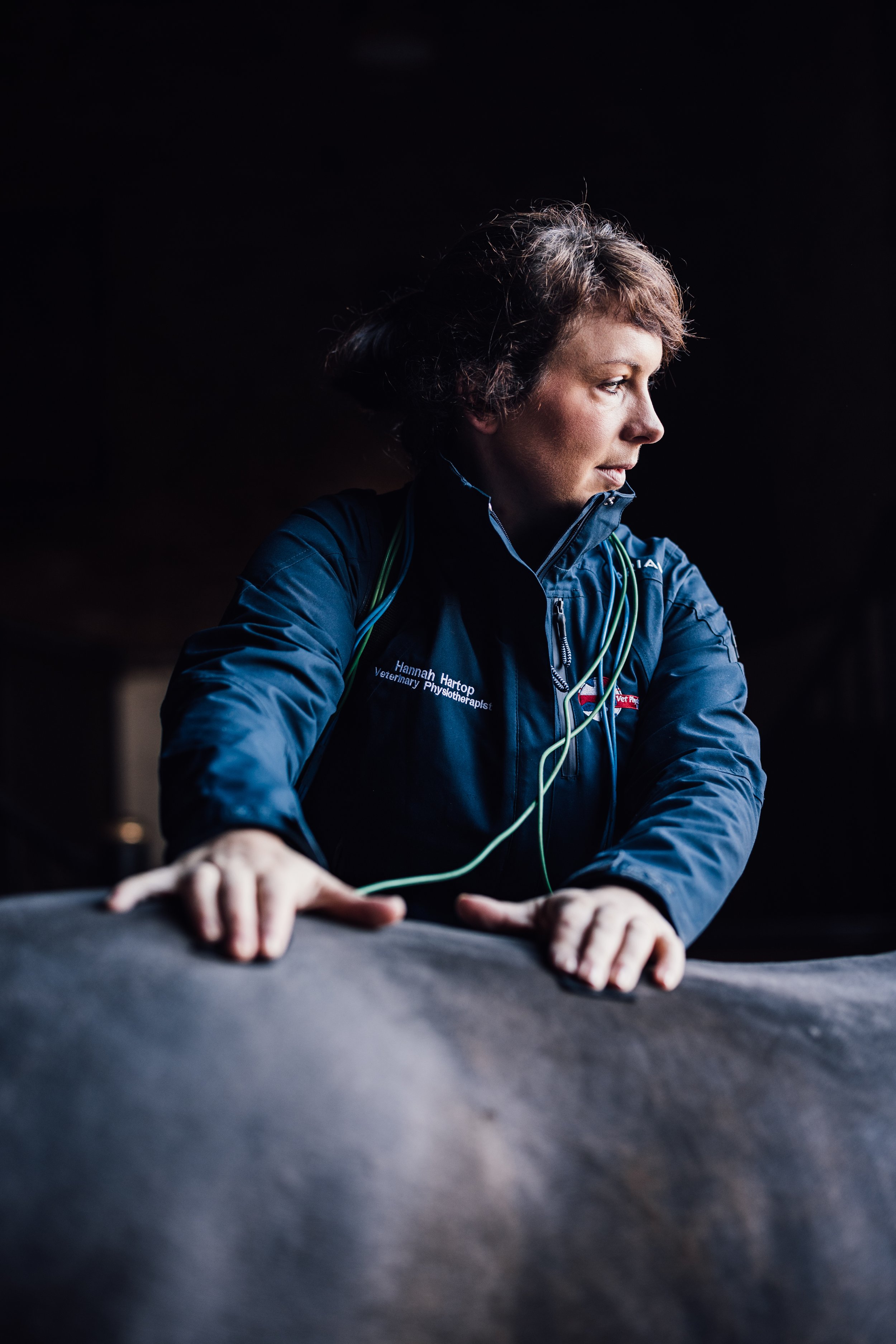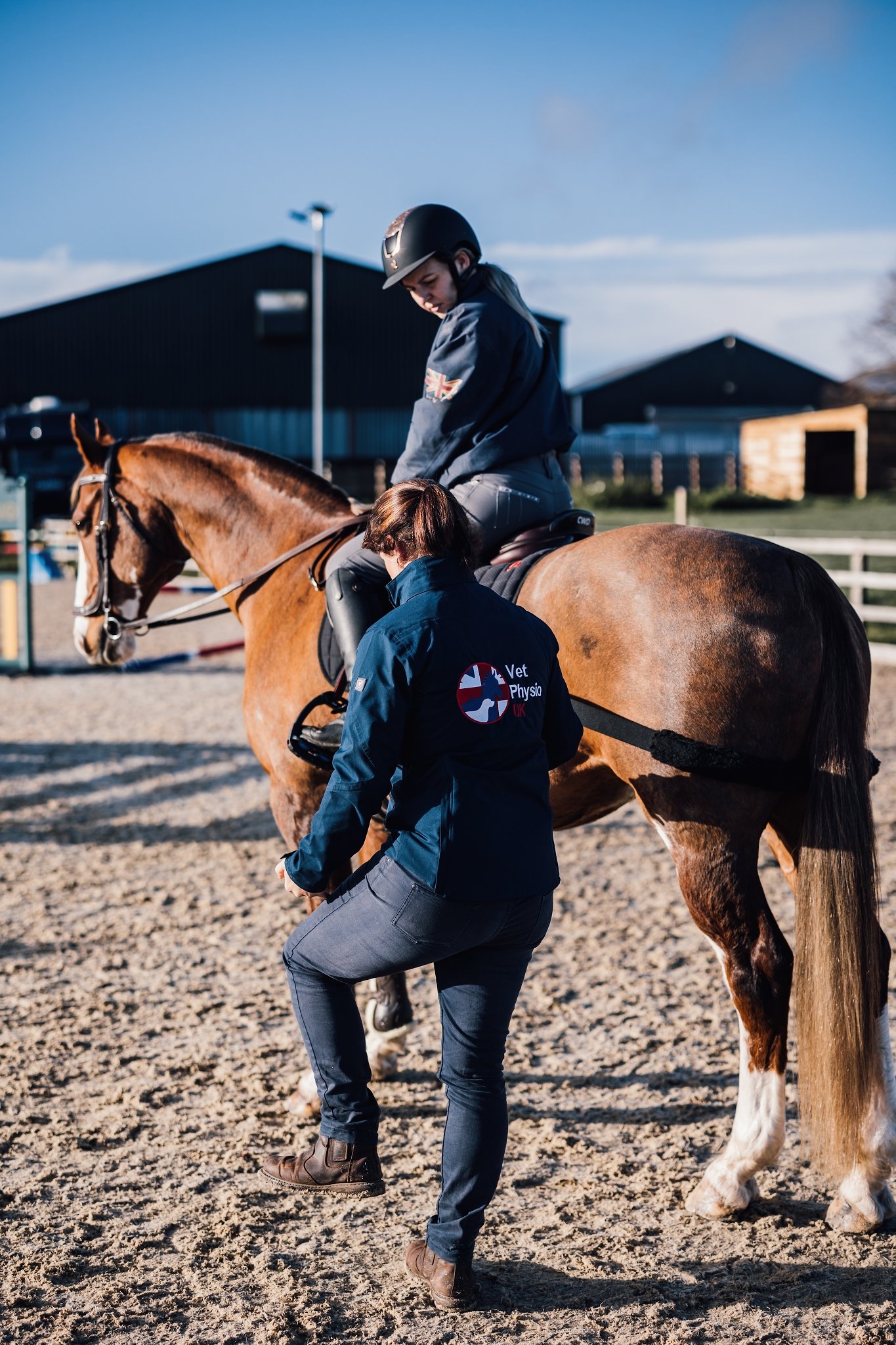
Professional and Evidence Based Veterinary Physiotherapy
At Vet Physio UK we provide excellence in Veterinary Physiotherapy with a holistic, multidisciplinary and evidence based approach. We provide treatment to high performance equine and canine athletes, as well as much loved family pets.
Equine Physiotherapy
When it comes to Equine Physiotherapy, we believe that every horse is an athlete. Our role is to become a member of your professional team (vet, farrier, saddler, nutritionist, other therapists) supporting you and your horse to reach your goals, whether that be competing at grassroots or elite level, completing fun rides or enjoying hacks together.
Canine Physiotherapy
Our Canine Physiotherapists can help manage chronic conditions, improve general condition, treat acute injuries, devise weight loss programmes as well as support and improve your dog’s performance. We will provide a bespoke treatment programmes in your home, followed by ongoing support whenever you need it.
Training and Courses
Some of our VPUK clinicians are Clinical Educators which means we often have VP students with us as part of their University degrees. We also lecture at several of the Universities providing VP degrees as well as holding our own CPD and training programmes for other therapists, students and owners throughout the year. Keep an eye on this page or our Facebook for more information.

About Veterinary Physiotherapy
Veterinary physiotherapy is often used as part of an animal’s comprehensive health routine, alongside conventional medicine. Supported by scientific research, Veterinary Physiotherapy benefits a wide variety of musculoskeletal and neurological conditions, including poor performance and pre-surgical conditioning and post-surgical rehabilitation.
At VPUK we provide Veterinary Physiotherapy treatments for horses, dogs, farm and other small animals. Our clients include performance horses, working or agility dogs and beloved pets. Treatments take place in the horse’s stable, dog’s home environment or during competition.
Treatment modalities include manual therapy such as massage, stretching, joint mobilisations, myofascial release and electrotherapies. Our therapists are well-equipped, and we utilise, LASER (class 3b), therapeutic ultrasound, H-Wave, TENS, NMES, and PEMF.
Electrotherapies are key in supporting manual treatment and can be used to provide pain relief, assist with tissue repair, reduce swelling and aid neurological regeneration. Treatment plans and remedial exercise programmes are tailored to the individual patient ensuring practicality and achievability.
In November 2020, the RCVS released new guidance (Chapter 19 in the Code of Professional Conduct) which outlined that musculoskeletal therapists would not have to seek veterinary referral for maintenance care. As such, veterinary referral will only be required from patients currently under the care of a veterinarian for an ongoing condition and not for maintenance treatments.
It is important to understand that, even with these new guidelines in place, Veterinary Physiotherapy works best when part of a holistic, multidisciplinary team. Our therapists strive to maintain open lines of communication with all members of your team to ensure the best possible care.
ELECTROTHERAPIES
-

Therapeutic Ultrasound
Ultrasound is a form of mechanical energy , and therefore, strictly speaking, not really electrotherapy at all, but does fall into the Electro Physical Agents grouping.
A piezoelectric effect caused by the vibration of crystals within the probe’s head generates the ultrasound waves. The ultrasound waves that pass through the skin cause a vibration of the local soft tissues.
This vibration or cavitation can cause deep heating locally though the patient will feel no heat sensation unless your physiotherapist selects a thermal dose. In situations where a heating effect is not desirable, such as a fresh injury with acute inflammation, the ultrasound can be pulsed rather than continuously transmitted.
Generally, the tissues with the higher protein content will absorb US to a greater extent, thus tissues with high water content and low protein content absorb little of the US energy (e.g. blood and fat) whilst those with a lower water content and a higher protein content will absorb US far more efficiently (e.g. tendon, ligament, scar tissue and fascia).
Therapeutic ultrasound may increase:
Healing rates, tissue relaxation, tissue heating, local blood flow, fracture healing and scar tissue breakdown.
-

H-Wave
H wave electrotherapy is a type of treatment frequently used by veterinary physiotherapists to relieve pain and assist recovery from muscle strain and injury.
The H wave treatment involves passing a low frequency electric current through a pair of electrodes which are placed on motor points over the target muscles. The wave form mimics a reflex, known as the Hoffman reflex. H wave therapy is reported to activate the slow twitch muscle fibres present in smooth muscle, such as blood and lymph vessels.
There is evidence to show the value of low frequency (2 Hz) H wave therapy in the treatment of human pain, and strong anecdotal evidence to support its effective use in horses.
Study findings indicate a moderate to strong effect of the H-Wave device in providing pain relief, reducing the requirement for pain medication and increasing functionality. The most robust effect was observed for improved functionality, suggesting that the H-Wave device may facilitate a quicker return to work and other related daily activities.
(Blum K, et al., The H-Wave device is an effective and safe non-pharmacological analgesic for chronic pain: a meta-analysis. Adv Ther. 2008 Jul;25(7):644-57)
-

Low Level Laser Therapy
Pain Relief: Laser decreases nerve sensitivity by decreasing bradykinin; a pain eliciting chemical. It also has a pain-blocking effect on certain nerve fibres.
Anti-inflammatory/Healing: Laser increases ATP, which is stored energy. This increased energy accelerates the repair processes of the cell. Laser also causes a widening of the arteries and veins around the injury which helps to remove damaged cellular debris and increase nutrients and oxygen.
Accelerated Tissue Repair and Cell Growth: Photons of light from lasers penetrate deeply into tissue and accelerate cellular reproduction and growth.
Improved Vascular Activity: Laser light increases the formation of new capillaries in damaged tissue, which speeds up the healing process, and closes wounds quickly.
Trigger and Acupuncture Points: Laser is particularly effective in extinguishing painful trigger points without the discomfort associated with needling.
Strains, sprains, and repetitive motion injuries can all be successfully treated with Laser. It can be used as a stand-alone treatment, or with rehabilitative exercise therapy.






